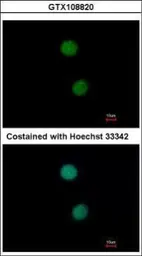DNA ligase IV antibody
Cat. No. GTX108820
Cat. No. GTX108820
-
HostRabbit
-
ClonalityPolyclonal
-
IsotypeIgG
-
ApplicationsWB ICC/IF IHC-P
-
ReactivityHuman, Mouse, Rat









